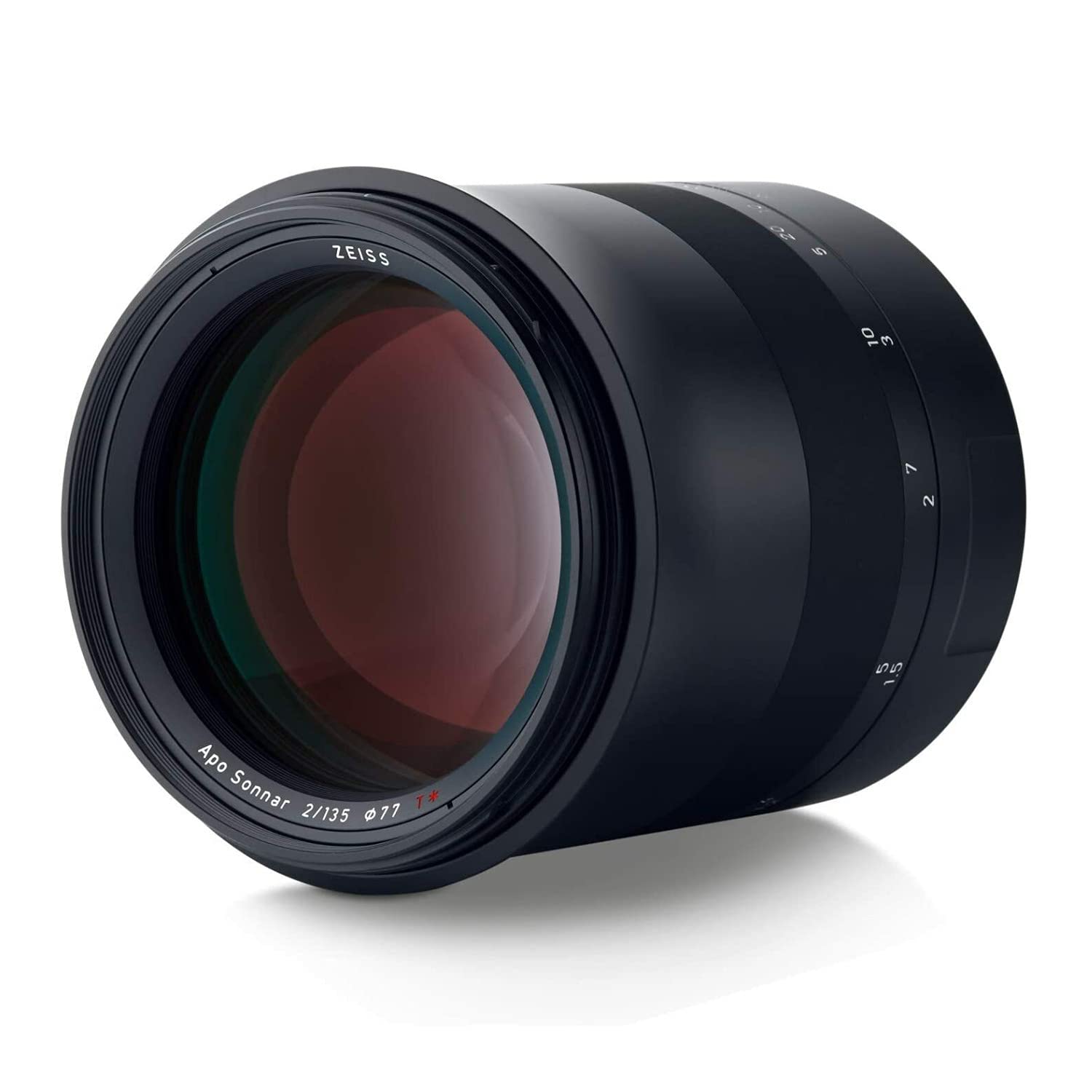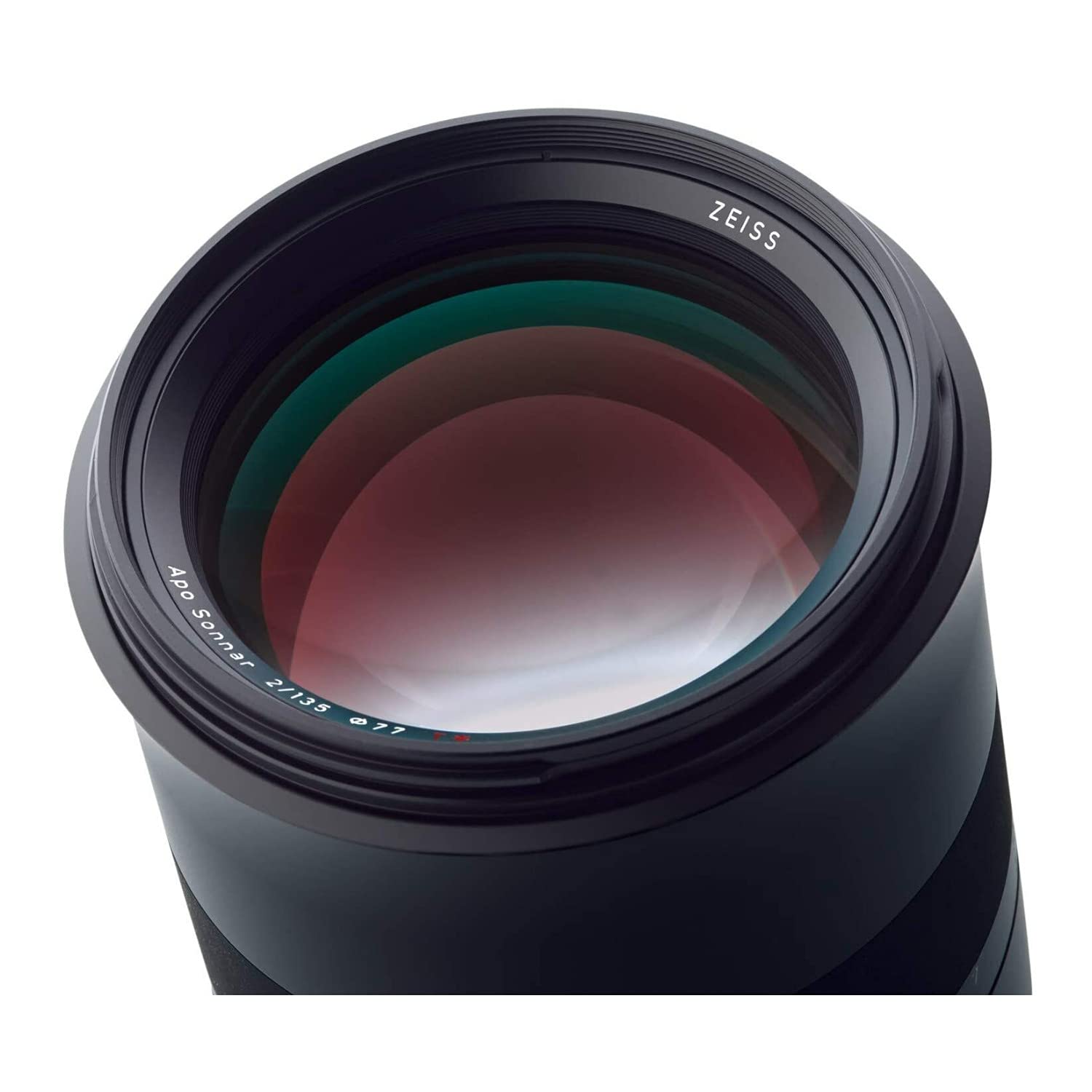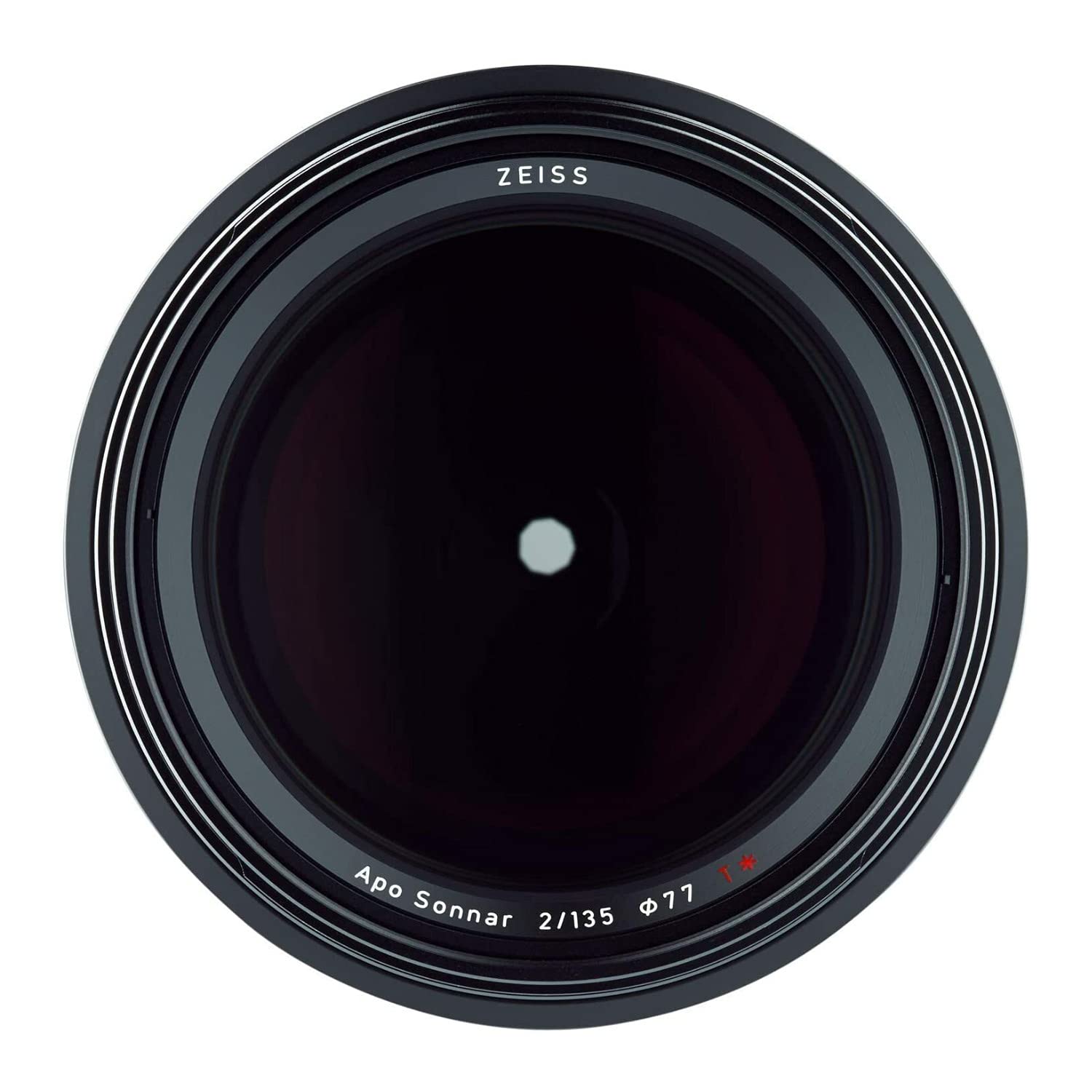Customer Services









🎥 Capture brilliance, frame by frame — the lens pros swear by.
The Carl Zeiss 135mm f/2.0 Milvus ZE is a premium manual-focus prime lens designed for Canon EF-mount cameras. Featuring a smooth, backlash-free focusing mechanism, advanced ZEISS T* coatings, and a weather-sealed all-metal construction, it delivers exceptional image quality optimized for high-resolution digital sensors. Ideal for creative professionals seeking sharp, consistent performance and durability in challenging conditions.
| Package Dimensions L x W x H | 29.9 x 16.7 x 14.4 centimetres |
| Package Weight | 1.78 Kilograms |
| Product Dimensions L x W x H | 13.2 x 8.5 x 8.5 centimetres |
| Item Weight | 39.6 Ounces |
| Brand | ZEISS |
| Camera Lens | 135 mm |
| Colour | Black |
| Has image stabilisation | No |
| Lens Fixed Focal Length | 135 Millimetres |
| Max Focal Length | 135 Millimetres |
| Min Focal Length | 135 Millimetres |
| Model year | 2010 |
| Objective Lens Diameter | 77 Millimetres |
| Part number | 000000-2111-636 |
| Size | 2/135 |
| Lens Design | Prime |
| Focus type | Manual Focus |
| Style | ZE Canon EF-Mount |
| Photo Filter Thread Size | 77 Millimetres |
| Guaranteed software updates until | unknown |
M**G
A great, though not perfect lens
I tried the Carl Zeiss 85mm f/1.4 Milvus ZF.2 the day it came into my regular camera shop and from the first moment I was a bit smitten and I bought the lens just under 10 months ago, so a some experience of using the lens.Size, weight and buildCompared to the Nikkor 85mm f/1.4G the 85mm Milvus is big and heavy. As far as I am aware it is the heaviest photography 85mm on the market at 2.67 lb (1.21 kg), which is heavier than the 85mm Otus. Physically the Milvus (90 x 110 mm) is a little smaller than the Otus (101 x 122 mm) or new Sigma 85mm (94.7 x 126.2 mm) but it is much bigger then the Nikkor 85mm f/1.4G (86.4 x 83.8 mm) or Zeiss 85mm f/1.4 Planar T Classic (77 x 85.1 mm). I love the feel of the old Zeiss 85mm f/1.4 Planar T Classic which is a joy to hold and a perfect weight. In comparison the 85mm feels a little too heavy and a little too big and I am not sure I would want to carry around the Milvus and D800 all day.Unlike the Otus or Classic 85mm, the Milvus does not focus focus internally. In all the photos of the Milvus you see the lens hood flush with the lens barrel but when you focus the hood can move out up to 7mm, which does create a noticeable gap. Personally I always keep the hood mounted to the lens, as it adds good protection for the glass but it does mean the lens is 145mm when mounted to the camera.The Milvus does feel exceptionally well made with the an all metal construction. The inside of the hood uses a felt like material, which catches a lot of fluff and I guess absorbs excess light, instead of reflecting. The barrel has a rubber'ish layer to help grip, when focusing. This is similar to most of Zeiss's modern lenses but I am not sure I am a big fan, particularly with the 85mm Milvus, as the rubber feels a little too far at the back of the barrel and generally my fingers are on the metal when I focus.When focusing the whole outer barrel does turn, instead of having a focus ring. This does not effect the front of the lens, which just goes in or out, or the aperture ring. Because of the diameter of the barrel I do find that it is a little too tight, if manually changing aperture, mounted on the camera. Of course because the Milvus is chipped, the aperture is generally done though the camera but it might be an issue, if mounted to an older film camera. That being said I am very happy that the Milvus line for Nikon still includes the aperture ring and I like that Zeiss have given the option of having a clickless aperture, by turning a little screw in the bottom of the lens, which makes it very useful for video production.I am also happy that Zeiss have included weather sealing in this lens, unlike the Otus and Classic. Over all whilst I do have a few quibbles with the feel of the lens it is exceptionally put together and just oozes quality.FocusingAll Zeiss lenses for Nikon's have manual focusing and the Milvus line is no exception. The lens has a 270 degree throw when when focusing, which is very long and there is a decent amount of resistance when turning, which is very nice and helps when grabbing focus. The major problem comes when focusing with most Nikkor DSLR's. Whilst Nikon cameras do have a manual range finder system, it is not really accurate enough to cope with 85mm at a very open aperture such as f/1.4 and because the depth of field is so slim, it is very hard to get focus using the view finder, even with the Nikon Dk-17M Magnifying Eyepiece. Zeiss suggest that when focusing using a DSLR, you should mount the camera onto a tripod and use the live view, which is what I generally do.Saying all that I have tried the 85mm Milvus mounted on the D5 and D500, with their new 153pt AF system and found dramatic improvements using the manual focus range finder system, with the camera accurately predicting focus at f/1.4.Optics.Where considering buying the 85mm Milvus, I also looked at the Nikkor 85mm f/1.4G and Zeiss 85mm f/1.4 Planar T Classic and I much preferred the Milvus to both. The Milvus is exceptionally sharp, only slightly less so than the 85mm Otus, with good corner sharpness, even at open apertures. It is similar to the Nikkor 85mm G but much better than the 85mm Classic.Where the Milvus pulls away from the Nikkor 85mm G, is contrast, the Nikkor isn't that contrasty and whilst that can be improved in post the Milvus blows the Nikkor away.The Milvus does have a small amount of chromatic fringing at open apertures but it isn't hugely noticeable and is again much better then the 85mm Classic. Where I do find the 85mm classic beats the Milvus is vignetting, the one optical weakness the Milvus has is the amount of vignetting the lens has when wide open which is heavy. It can be improved in post and when you stop down to around 3.5 it is pretty much gone but it is a bit of a disappointment.When wide open Milvus bokah is great, up there with the Otus and maybe slightly better, certainly it is close. The background is smooth and creamy and whilst you do get some elliptical bokah balls away from the centre of the frame, it isn't worse than any other 85mm (maybe with the exception of Sony 85mm GMaster and Otus) and unlike the Otus the bokah balls do not suffer from onioning.CostThe 85mm Milvus isn't a cheap lens but it is substantially cheaper than the 85mm Otus and is the same price as the Nikkor 85mm f/1.4G. I think compared to the competition it is well priced, you get what you pay for and the Milvus feels like a much better lens than the Nikkor. Of course there are plenty of 85mm lenses cheaper then the Milvus, including the old Sigma 85mm f/1.4, which is just being discontinued, for the new one (Not sure of the price yet). The Tamron 85mm f/1.8 VC is very good and Zeiss 85mm Classic is much cheaper as well.ConclusionI am a big fan of the Zeiss 85mm f/1.4 Milvus but it isn't perfect by any means. Would I recommend the Milvus as a first 85mm, probably not with most Nikkor DSLR's because it isn't practical hand held, trying to grab focus. I have an old Nikkor 85mm f/1.8D, which I use if i am walking around. If I was shooting with older film cameras, I would probably recommend the Zeiss 85mm f/1.4 Planar T Classic, because of its size and the fact you don't notice the imperfections as much.So who would I recommend the 85mm Milvus to? The lens comes into its own when mounted to a tripod and I would say anyone interested in fashion, portraits and enviromental portrait photography should consider the lens. It isn't a lens for speed but if you set up the shot first, then the lens is exceptional. Also by the time you get to f/4 you probably won't notice any difference between the Milvus and Otus.The Milvus was the right lens for me, I didn't need fast, in fact I was looking to slow down the way I shoot, so the Milvus was perfect. I am looking forward to when Nikon release the D810 replacement, so I can start to shoot hand held.
Trustpilot
1 month ago
3 weeks ago